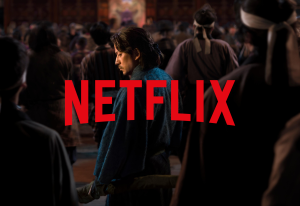More than any other Earth-set Marvel Studios film, Ryan Coogler’s Black Panther seems to have its own aesthetic, particularly when it comes to the costumes worn by everyday people — and the numerous heroes and villains –of Wakanda, the fictional, affluent African nation at the center of the movie’s conflict.
Videos by ComicBook.com
Other than the obvious division of Wakanda from the rest of the Marvel Cinematic Universe and world, though, the costume department focused on how to best integrate Wakanda’s unique blend of high-tech and traditional African design into the world around it in a way that does not seem like the nation has been hiding from the rest of the universe for a century.
“They’re not in outer space,” costume designer Ruth Carter joked. “They still like to wear Nikes that light up and yellow hats and big kooky glasses. They still wear natural hair. They still like to combine prints like everybody else does.”
Carter wasn’t all jokes, however.
“I think what it also says is that there’s a different kind of a freedom that they enjoy,” she added. “That is because they have such a tight culture, the different tribes, they do co-mingle. It’s just a place that has the same kind of rules and regulations that the outside world does. There are bad kids in the park. There’s a merchant district. There’s a hospital.”
To keep the sprawling and sometimes-complicated world they were building straight, Carter said that she used a kind of cheat: she used different New York neighborhoods as stand-ins for some elements of Wakandan culture, so that she had a kind of shorthand to work with in her head.
“I took each district and gave it a name I could relate to and remember easily,” Carter admitted. “I said Steptown was like Brooklyn, or NYU. Then I’d say another district was like the Upper West Side, where there’s more families. It’s more settled down but it’s still New York. I use Manhattan as my way of remembering how I was going to view different parts of Wakanda and it kind of did make sense.”
It was not all New York, though — that would be difficult, considering that Wakanda is a whole country and has different needs than just a city.
“There’s an area that’s mainly medical. That’s like UCLA medical area,” Carter said. “You get into some of those communities it’s doctors and people walking around. There are different districts of Wakanda that … I’d say, how do I make it look unique to us, in that it’s a barefoot culture? Very advanced in technology. What are they wearing? Is it corny to have something lighting up? Our director of photography walks around with her headset on and the light is blinking all the time. I was like, Wakanda! It’s here every day. That’s kind of how I feel. Like you can actually – after watching this film – see things that you can point at and say: ‘That’s Wakanda.’”
Black Panther currently has a ComicBook.com User Anticipation Rating of 4.17 out of 5, making it the second most anticipated upcoming comic book movie among ComicBook.com Users. Let us know how excited you are for Black Panther by giving the movie your own ComicBook.com User Anticipation Rating below.
Black Panther opens in theaters on February 16th.
Other upcoming Marvel Cinematic Universe movies include Avengers: Infinity War on May 4th, Ant-Man and the Wasp on July 6th, Captain Marvel on March 8, 2019, the fourth Avengers movie on May 3, 2019, the sequel to Spider-Man: Homecoming on July 5, 2019, and Guardians of the Galaxy Vol. 3 in 2020.








